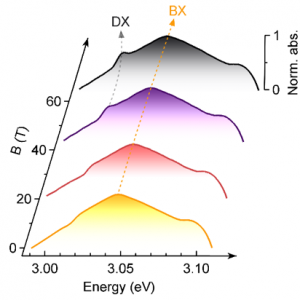Optically inactive dark exciton states play an important role in light emission processes in semiconductors because they provide an efficient nonradiative recombination channel. Understanding the exciton fine structure in materials with potential applications in light-emitting devices is therefore critical and it has to be taken into account during the design stage for the deterministic development of future opto-electronic devices. However, detailed information about the exciton fine structure is missing in the case of 2D perovskites, a hybrid organic-inorganic material system with outstanding optical properties. We show that in this class of materials the dark exciton is the lowest-lying excitation. This conclusion is achieved by performing optical spectroscopy measurements in a high magnetic field. The in-plane magnetic field mixes the bright and dark exciton states, brightening the otherwise optically inactive dark exciton (see figure). Although the dark exciton is the lowest-lying excitation in 2D perovskites, these materials exhibit an intense photoluminescence with high quantum yield even at low temperatures, an indication of a non-Boltzmann distribution of the bright-dark exciton populations. We attribute this to the phonon bottleneck, which results from the weak exciton–acoustic phonon coupling in soft 2D perovskites. Hot photoluminescence is responsible for the strong emission observed in these materials, despite the substantial bright-dark exciton splitting.
Publication – Brightening of dark excitons in 2D perovskites
M. Dyksik, H. Duim, D. K. Maude, M. Baranowski, M. A. Loi, P. Plochocka, Sci. Adv. 7, 1–8 (2021)

Figure: Absorption spectra of (PEA)2PbBr4 measured in Voigt geometry. With increasing magnetic field strength an additional absorption signal (DX) at the low energy side of bright exciton (BX) is visible. This new feature is related to the brightened dark exciton.
